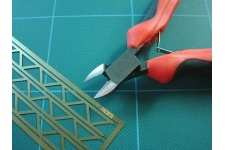Go Back
3 items in stock
View Product
1 item in stock
View Product
Related items
£ 10.16
Expo Tools 75581 Sprue and Fret Cutters
- Multi Scale
- Multi Gauge
£ 11.86
Expo Tools 70240 Modelmakers Flexible File Set
- Multi Scale
- Multi Gauge
Recently viewed
£ 5.22
Metcalfe PO295 Castle Stonework Material Sheets Pack
- 1:76 Scale
- OO Gauge





